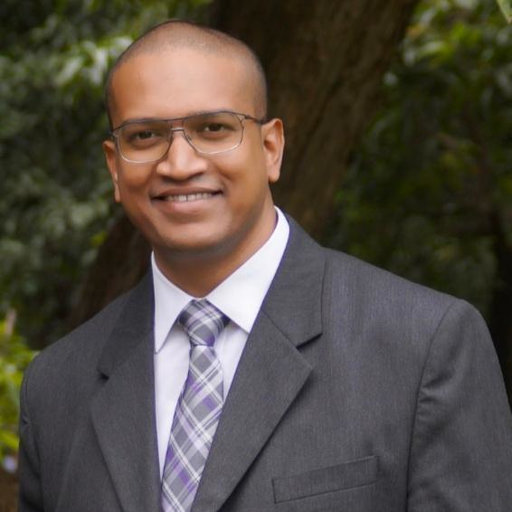Pandemic articles list
A comparative study of social and economic aspect of migration
India is a country of immense diversity. It is home to people of many different racial, languages, ethnic, religious, and national backgrounds. Groups of people in India differ from each other not only in physical or demographic characteristics but also in distinctive patterns of behavior and these patterns are determined by social and cultural factors like language, region, religion, and caste. Apart from behaviour, economic development, level of education and political culture of the people in various social segments differ from region to region. More you can say that economy and cultures have been enriched by the contributions of migrants from round the globe. In an increasingly globalised world, migratory movements is continuously shaping the countries all over the world. Some countries like India and Ireland, which set the example of economic development and social integration, have the positive impact of the migration by globalisation and some countries like USA, which recently witness racism, xenophobia and discrimination have the negative impact on the migrants. It does not mean India do not face fragmentation and USA do not have cohesion. USA have many stories which show successful integration process, that facilitated the lives of immigrant communities, but being a developed country it still suffers from cultural alienation. In these countries, borders are built within borders to create cultural divides that do not allow people to integrate. Recently, this problem has become more prominent due to the rise of terrorism, clash of cultures in the world, leading to the glorification of stereotypes. People are becoming less accepting towards anyone who does not belong to their region. Migration does not stop after people move from one place to another place. The main question start after that ‘now what’ they will do. That is why this topic needs to be discussed thoroughly in order to find better solutions. This paper will begin with an analysis of different approaches to Migration, discuss the target groups for integration policies, provide indicators of the current situation of migrants and proceed to an analysis of integration tools: legislation, social policies and participatory processes. It will focus not only on the impact of migration but also on social integration, mix culture like indo-western culture in a comparative basis.
A comparative study of social and economic aspect of migration
India is a country of immense diversity. It is home to people of many different racial, languages, ethnic, religious, and national backgrounds. Groups of people in India differ from each other not only in physical or demographic characteristics but also in distinctive patterns of behavior and these patterns are determined by social and cultural factors like language, region, religion, and caste. Apart from behaviour, economic development, level of education and political culture of the people in various social segments differ from region to region. More you can say that economy and cultures have been enriched by the contributions of migrants from round the globe. In an increasingly globalised world, migratory movements is continuously shaping the countries all over the world. Some countries like India and Ireland, which set the example of economic development and social integration, have the positive impact of the migration by globalisation and some countries like USA, which recently witness racism, xenophobia and discrimination have the negative impact on the migrants. It does not mean India do not face fragmentation and USA do not have cohesion. USA have many stories which show successful integration process, that facilitated the lives of immigrant communities, but being a developed country it still suffers from cultural alienation. In these countries, borders are built within borders to create cultural divides that do not allow people to integrate. Recently, this problem has become more prominent due to the rise of terrorism, clash of cultures in the world, leading to the glorification of stereotypes. People are becoming less accepting towards anyone who does not belong to their region. Migration does not stop after people move from one place to another place. The main question start after that ‘now what’ they will do. That is why this topic needs to be discussed thoroughly in order to find better solutions. This paper will begin with an analysis of different approaches to Migration, discuss the target groups for integration policies, provide indicators of the current situation of migrants and proceed to an analysis of integration tools: legislation, social policies and participatory processes. It will focus not only on the impact of migration but also on social integration, mix culture like indo-western culture in a comparative basis.
Study of temperature variation in human peripheral region during wound healing process due to plastic surgery
In this paper, investigations are made to analyze the human body temperature during wound healing process due to surgery. Wound is considered after the skin graft. Skin graft is a technique used in plastic surgery. Skin is the first line of defense between the human and environment, it is very susceptible to damage. Internal body or core temperature (Tb) is one of the clinical vital signs along with pulse and respiratory rates. Any disturbance in body temperature will drive complexities in wound healing process. These studies are important in the mechanism of establishing the limits of thermal regulation of human body during the healing process in different situations and conditions. The Finite element method is used to analyze tissues temperature for normal tissues (donor site) and abnormal tissues (tissues after surgery). Appropriate boundary conditions have been framed. Numerical results are obtained using Crank Nicolson Method.
Metapuf: a challenge response pair generator
Physically unclonable function (PUF) is a hardware security module preferred for hardware feature based random number and secret key generation. Security of a cryptographic system relies on the quality of the challenge-response pair, it is necessary that the key generation mechanism must unpredictable and its response should constant under different operating condition. Metastable state in CMOS latch is undesirable since it response becomes unpredictable, this feature used in this work to generate a unique response. A feedback mechanism is developed which forces the latch into the metastable region; after metastable state, latch settle to high or state depends on circuit internal condition and noise which cannot be predicted. Obtained inter hamming variation for 8 PUF is 51% and average intra hamming distance is 99.76% with supply voltage variation and 96.22% with temperature variation.
Intersection of caste and gender based subjugation
One of the unique features of Indian society is prevalence of caste system which was originated thousands of years back to demarcate the people engaged in different occupation or jobs. Initially it was not much rigid but gradually people belonging to upper castes for their own selfish means to maintain their monopoly made this arrangement hereditary and started treating people of lower castes disgracefully. For preservation of this system, people started controlling their women to prevent inter-caste marriages and the concept of endogamy came up. This robbed away many types of freedom from women. For women belonging to lower castes, this situation is worse as they are doubly subjugated on the basis on caste as well as gender. Men belonging to their own caste treat them as secondary beings. This paper throws light on this intersection. How intersection of these two kinds of inequalities place them at the lowest position in Indian society. Dr. B.R. Ambedkar rises as their leader who all his life worked for empowerment of downtrodden section of society. He argues that education is the primary tool for evading these differences among people. He further emphasizes to adopt the concept of exogamy to break the backbone of Indian caste system and to immediately leave a religion or culture which legitimizes such system of inequality among people of the same land.
Intersection of caste and gender based subjugation
One of the unique features of Indian society is prevalence of caste system which was originated thousands of years back to demarcate the people engaged in different occupation or jobs. Initially it was not much rigid but gradually people belonging to upper castes for their own selfish means to maintain their monopoly made this arrangement hereditary and started treating people of lower castes disgracefully. For preservation of this system, people started controlling their women to prevent inter-caste marriages and the concept of endogamy came up. This robbed away many types of freedom from women. For women belonging to lower castes, this situation is worse as they are doubly subjugated on the basis on caste as well as gender. Men belonging to their own caste treat them as secondary beings. This paper throws light on this intersection. How intersection of these two kinds of inequalities place them at the lowest position in Indian society. Dr. B.R. Ambedkar rises as their leader who all his life worked for empowerment of downtrodden section of society. He argues that education is the primary tool for evading these differences among people. He further emphasizes to adopt the concept of exogamy to break the backbone of Indian caste system and to immediately leave a religion or culture which legitimizes such system of inequality among people of the same land.
Deprivation in education amidst covid-19 pandemic crisis
The education sector is one of the most affected areas by the pandemic. It caused a huge chasm that could affect the teaching-learning industry in the future. Although it is possible to have deprivation in education, the concept must not be embraced. Instead, HEI should focus on developing new and innovative ways of delivering education constructively. This paper focuses on the importance of both research and teaching in education. The two areas are identified and analyzed respectively to adopt innovative methodologies to enhance productivity in a higher learning institute. This paper intends to propose relevant teaching and learning methods to benefit the students, the university, and society. This paper utilizes several factors involved in the pandemic crisis and suggests ways to use several methods to regenerate the learning environment without hassle.
A study to assess the determinants of quality of life among adults during covid-19 pandemic in south india
Background: Quality of life (QOL) is an important determinant in assessing the health status. It includes physical, psychological, and social well being. The aim of this research was to identify the intrinsic and extrinsic factors of QOL; and the association of QOL with socio-demographic, anthropometric variables and lifestyle variables. Methods: This cross sectional study was conducted in Tamil Nadu among 327 adults during July 2020 through online using standardized WHOQOL-BREF tool to assess the quality of life along with socio-demographic variables, anthropometric variables and lifestyle variables. Principal component analysis method was used to identify the factors which influence the QOL of adults. The association between socio-demographic variables, anthropometric variables and lifestyle variables with quality of life was also assessed. Among the selected samples 165 were female and 162 were male. The structured questionnaire included Section A- socio-demographic variables such as age, gender, occupation, educational qualification, place of residence, marital status; Section B - anthropometric variables such as height, weight and BMI; Section C lifestyle variables such as type of diet and physical activity pattern; and Section D -consisted of Standardized WHO-BREF tool to assess the quality of life. Results: The identified intrinsic factors include Life style approach, Emotional stability and Health status; Safety & accomplishment, Financial support with societal information were identified as extrinsic factors. These factors played an influential role in QOL of the adults during pandemic crisis. The association between the type of residence (p=0.001), occupation (p=0.000) and marital status (p=0.022) with QOL was highly significant at 1 % and 5 % respectively. Conclusion: The identified factors during covid-19 pandemic had influenced the quality of life domains namely physical health, psychological, social relationship and environment. Intrinsic factors were dependent on individual’s perception towards accepting the new normal during the pandemic. Whereas, extrinsic factors were greatly influenced by the environment and society in which the study participants were exposed. One of the identified extrinsic factors (residence), showed high significant association with QOL.
What really matters: experiences of emergency remote teaching in university teaching and learning during the covid-19 pandemic
The COVID-19 pandemic and related lock downs have accelerated the need for online and remote teaching within university settings. However, due to the abrupt nature of the pandemic, many academic staff were not prepared for this forced transition. This study aimed to understand how the pandemic affected academics at a New Zealand university, with regards to their transition to emergency remote teaching. Specifically, it explores the challenges as well as benefits academics experienced during this transition. Recommendations for future online learning are also made. Academic staff (N 67) at a New Zealand University completed an anonymous online survey. Quantitative data were analyzed statistically using descriptive and inferential statistics, while qualitative data were analyzed thematically. Major challenges experienced included miscommunication from the university, concerns about student access to technology, finding a quiet space to work, lack of digital competence skills, too much screen-time, managing work hours, and work/ life balance. Benefits included enhanced flexibility, enhanced teacher creativity, increasing autonomy of learners, and reduced commute time. Looking forward, academic staff desired future teaching to include blended learning and virtual immersion. New strategies of working remotely are being explored to facilitate teaching and learning while catering to the preferences and skills of both educators and students. Our findings honor the considerable agility of academic staff who sought to sustain and enhance excellence in remote education. At an institutional level our findings point to the need for staff to be supported by their institutions as they further refine their work within new-found spaces
An international, interlaboratory ring trial confirms the feasibility of an extraction-less “direct” rt-qpcr method for reliable detection of sars-cov-2 rna in clinical samples
Reverse transcription–quantitative polymerase chain reaction (RT-qPCR) is used worldwide to test and trace the spread of severe acute respiratory syndrome coronavirus 2 (SARSCoV-2). “Extraction-less” or “direct” real time–reverse transcription polymerase chain reaction (RT-PCR) is a transparent and accessible qualitative method for SARS-CoV-2 detection from nasopharyngeal or oral pharyngeal samples with the potential to generate actionable data more quickly, at a lower cost, and with fewer experimental resources than full RT-qPCR. This study engaged 10 global testing sites, including laboratories currently experiencing testing limitations due to reagent or equipment shortages, in an international interlaboratory ring trial. Participating laboratories were provided a common protocol, common reagents, aliquots of identical pooled clinical samples, and purified nucleic acids and used their existing in-house equipment. We observed 100% concordance across laboratories in the correct identification of all positive and negative samples, with highly similar cycle threshold values. The test also performed well when applied to locally collected patient nasopharyngeal samples, provided the viral transport media did not contain charcoal or guanidine, both of which appeared to potently inhibit the RT-PCR reaction. Our results suggest that direct RT-PCR assay methods can be clearly translated across sites utilizing readily available equipment and expertise and are thus a feasible option for more efficient COVID-19 coronavirus disease testing as demanded by the continuing pandemic.
Most Popular Category
- Pharmacy (256)
- Education and social science (212)
- Pharmacology (208)
- Pharmacognosy (172)
- Business management (140)
- Pharmacology and toxicology (129)
- Pharmaceutical sciences (125)
- Education and training (122)
- Research (116)
- Medicine (110)
- Management (97)
- Health Science (95)
- Human resource management (83)
- Biological Sciences (82)
- Computer Science (80)
- Computer Science Applications (74)
- Accounting and finance (66)
- Information technology (58)
- Public health (57)
- Pharmacy practice (57)
1.jpg) Ekta Meena
Ekta Meena  Santosh kumar
Santosh kumar  Gwen Erlam
Gwen Erlam  Bitrus Inuwa
Bitrus Inuwa